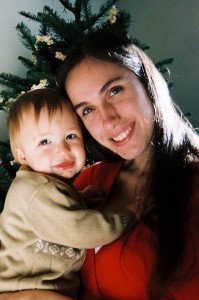Last month, our family went on a cruise to Alaska. It really was an enjoyable trip but as I was thinking of the luxury of the experience I also thought of the life situations of many around the world that is so opposite from what I was experiencing. I’ve become more aware of global poverty and my role in being the change I want to see in the world that I knew if I could afford a trip like that that I could also afford giving more to alleviate the poverty of many through out the world. I started thinking about what I could give. It really was a vague thought while on this trip and one I knew I wanted to continue pondering.
Then this last week, like an answer to a prayer, I heard on NPR an interview with Peter Singer who wrote “The Life You Can Save: Acting Now to End World Poverty” which is his call to the people of the world to give a portion of their income to causes working to address global poverty. The website The Life You Can Save provides a calculator where you can find out what 1% of your income is (since I assume most WAVE readers earn less than $105,000 USD a year) as well as a list of organizations that are addressing poverty in a sustainable and community building way.
It was a bit of a wake up calling knowing that 1% of my income is less than what my family spends in eating out at restaurants each year (blush…) and yet its also a good lesson that giving to causes that actually make a difference in the lives of people is more possible than I had thought.
One of the organizations named on The Life You Can Save website is the Worldwide Fistula Fund which helps repairs physical damage to a mother caused by prolonged labor and lack of access to emergency maternity care in poor countries. The documentary A Walk to Beautiful highlights what is like for a woman who becomes completely incontinent as a result of childbirth and how she becomes an outcast in her community as a result. The treatment is estimated to be about $450 to restore a woman where she is able to rejoin her community.
Another organization that has come highly recommended to me is The Hunger Projectbecause it assists an entire village for five years. This one is highly attractive to me as it focuses on an entire community rather than an individual or family.
I am also familiar with the humanitarian work that the LDS Church does and I know that in addition to providing immediate emergency relief in natural disasters, they also work on community building in poverty stricken areas around the world. I look forward to the day when my husband and I can serve humanitarian service missions. Perhaps I’ll be able to put my midwifery training to use in this way.
In taking a look at my finances, I know this is something that I can do even in addition the tithing that I pay on my family’s income to the church. In viewing the comfort and opportunities available to me and my children, I know that it is something I should do.
I took the pledge on The Life You Can Save and used their calculator to figure out what the guidelines are for my income level. I am encouraged by the stories of the people on the site who report that they can comfortably give more than the recommended guideline even on low incomes. One man from the UK makes the equivalent of $25,000 a year and finds he can donate 5% of his income to global poverty efforts.
Have you heard of this idea of widespread societal giving? What do you think? Will you take the pledge? Which organizations do you feel drawn to support? How have you worked with other Latter-day Saints on humanitarian efforts?
As always, WAVE invites readers to submit their own experiences with volunteer and charitable efforts. Please share your stories of being involved in efforts to relieve global poverty by emailing service@ldswave.org.

 Jenne Alderks, M.Ed., is the stay at home mother of two, a convert of eight years to the Church of Jesus Christ of Latter-day Saints, and serves as a ward missionary in Seattle, WA. She is Project Coordinator of Solace For Mothers, a non-profit organization providing support to mothers who have been traumatized by their childbearing experiences. Jenne also is an advocate for mother friendly maternity care, sustainable living and family friendly public policy.
Jenne Alderks, M.Ed., is the stay at home mother of two, a convert of eight years to the Church of Jesus Christ of Latter-day Saints, and serves as a ward missionary in Seattle, WA. She is Project Coordinator of Solace For Mothers, a non-profit organization providing support to mothers who have been traumatized by their childbearing experiences. Jenne also is an advocate for mother friendly maternity care, sustainable living and family friendly public policy.
